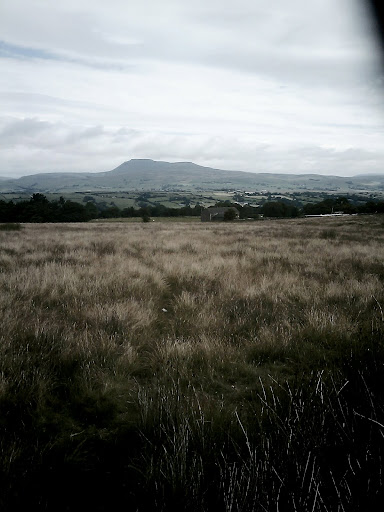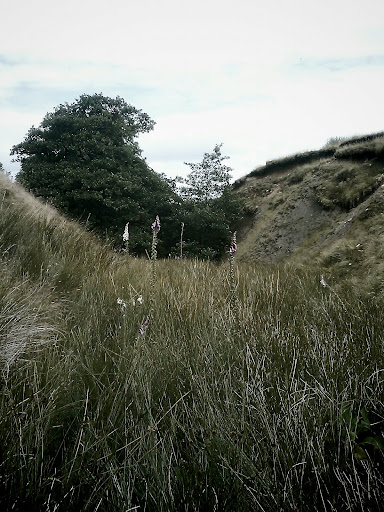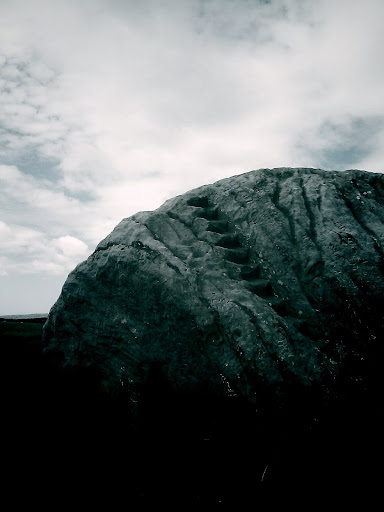A stone, Satan and finding mortality in graffiti

I am on open moorland, I am wearing a playsuit with leggings underneath and I need a wee. This is not good. This is really not good. I knew I should not have bought an all in one playsuit at the age of 32. To undertake the weeing process will render me startlingly naked so I perform clumsy hopping motions trying to remove leggings from underneath the legs of the playsuit and then fall onto spiky moor. I resolve not to ever wear a playsuit again.
This is proper moorland too, well if proper moorland consists of seeing the dried desiccated husk of a sheep adhered to the road. We are on a mission to see the Great Stone of Fourstones, a behemoth of a rock said to have been dropped by a clumsy satanic hand when the devil was somewhat somewhat helpfully for an entity of darkness building The Devils Bridge in Kirkby Lonsdale. The other somewhat more prosaic and rational explanation is that the monolith is a remnant from the ice age but I prefer to ignore cold hard science in favour of lubricous badly remembered anecdote, legend and lies (but no, I am not a fan of the Bible)

Upon the great stranded rock’s sides, centuries of graffiti have been carved. The more modern graffiti seems rubbish old vandalism-crude hearts with ‘Kevin 4 Sue’ ripped crudely into the rock but look closely and you can see the faint and beautiful swoop of calligraphy from others who have made the trek through the moorland to carve their name on this isolated rock, to proclaim their immortality. And now only a faint elegant swoop of a letter `J’ remains. Look for the name Metcalfe, admire the feathered elegance of the letters, elegy to a time when the precision and style of writing was as important as the content. The Great Rock is a graveyard of names from the past and the future.
There are small carved steps leading to the top. I want to know who carved the steps and when but like the fact there is no information office telling you exactly what happened and with illustrated timelines because no one really knows, its past is not meticulously photographed, explained and sold in a glossy pamphlet format. Not all history is recorded, especially not here in this bleakly beautiful boundary between Lancashire and Yorkshire.

There are even smaller steps, mere rough grooves around the other side of the rock, steps you would not even know were steps if you were not to have read the small and light of information vandalised board so distant from the rock, it is almost invisible. The sign references enticingly and briefly the probability there were another three stones, hence the name but the other three stones have disappeared over the centuries or were never there to begin with. We will never ever know.
I like this and am yet frustrated by it. I like not being told but I still want to know. But the mystery of this rock, its surface slightly scarred but its bulk still reaming unlike the weak flesh and bone who over centuries attempt to reclaim it. But they become mere dust whilst the rock remains, an Ozymandius looking out over moorland, fields and mountains immobile and desolate, the names of once living breathing humans slowly fading away over time to become nothing more than a faint and fluttering letter J.















